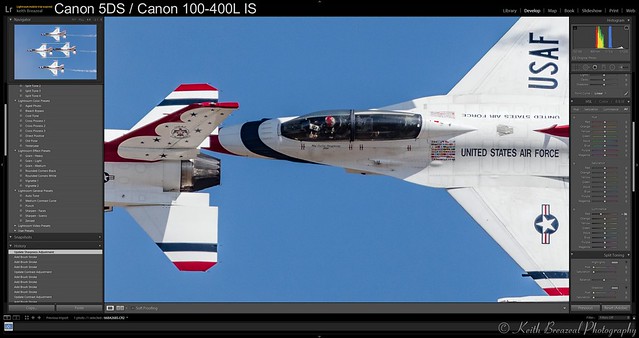There have recently been some strongly held opinions on image quality of the 5DsR presented in this forum. Some of these opinions have stated that:
- There is little difference in image quality between the 5DsR and other 5D cameras
- The 5DsR has lots of noise at high ISOs.
As a relatively recent owner of a 5DsR in addition to my 6D (and I had owned a 5DII before then), this did not match my perceptions.
So in order to do a fair comparison of detail at ISO 100 (which is where I shoot landscapes) and noise at ISO 3200 (commonly used at events), I:
- Downloaded Raw files of the 5DIII, 5DIV, 5DsR and 6D of DPreview's "studio test scene"
- I processed these in LR 6 with no adjustments
- I cropped the ISO 100 files at 1800 pixels on the 5DsR files and copied the crops onto the other ISO 100 files and exported at 1800 pixels along the long edge. This would have upscaled all the files except 5DsR
- I cropped the ISO 3200 files at 1800 pixels on the 5DIII files and copied the crops onto the other ISO 3200 files and exported at 1800 pixels along the long edge. This would have downscaled the 5DsR file, the 5DIV somewhat, and slightly upscaled the 6D file.
These are attached. In case the file names don't show they are 4 x ISO 100 files: 5DIII, 5DIV, 5DsR, and 6D, then the ISO files in the same order.
IMHO:
- The ISO 100 5DsR files are noticeably sharper - look at the bristles of the right hand brush and the fine text on the paint tubes.
- The 5DsR is slightly pinker, the 5DIV is slightly yellower, but I note that the lighting (as shown by reflections) differs between the images)
- In the ISO 3200 images, the 5DIII has the most noise, the 5DIV the least. The 5DsR has more noise than the 5DIV, but the grain is very fine and it did not bother me. There was some false colour in the 5DIII image. The pink colour cast in the 5DsR image bothered me more than the noise.
Anyway, this comparison focused on the two extremes of my work. I did not compare images at extremely high ISOs and did not compare dynamic range. If they wish, someone else can do that.
This confirmed my view, that the 5DsR produces excellent image quality in terms of detail and noise.
- There is little difference in image quality between the 5DsR and other 5D cameras
- The 5DsR has lots of noise at high ISOs.
As a relatively recent owner of a 5DsR in addition to my 6D (and I had owned a 5DII before then), this did not match my perceptions.
So in order to do a fair comparison of detail at ISO 100 (which is where I shoot landscapes) and noise at ISO 3200 (commonly used at events), I:
- Downloaded Raw files of the 5DIII, 5DIV, 5DsR and 6D of DPreview's "studio test scene"
- I processed these in LR 6 with no adjustments
- I cropped the ISO 100 files at 1800 pixels on the 5DsR files and copied the crops onto the other ISO 100 files and exported at 1800 pixels along the long edge. This would have upscaled all the files except 5DsR
- I cropped the ISO 3200 files at 1800 pixels on the 5DIII files and copied the crops onto the other ISO 3200 files and exported at 1800 pixels along the long edge. This would have downscaled the 5DsR file, the 5DIV somewhat, and slightly upscaled the 6D file.
These are attached. In case the file names don't show they are 4 x ISO 100 files: 5DIII, 5DIV, 5DsR, and 6D, then the ISO files in the same order.
IMHO:
- The ISO 100 5DsR files are noticeably sharper - look at the bristles of the right hand brush and the fine text on the paint tubes.
- The 5DsR is slightly pinker, the 5DIV is slightly yellower, but I note that the lighting (as shown by reflections) differs between the images)
- In the ISO 3200 images, the 5DIII has the most noise, the 5DIV the least. The 5DsR has more noise than the 5DIV, but the grain is very fine and it did not bother me. There was some false colour in the 5DIII image. The pink colour cast in the 5DsR image bothered me more than the noise.
Anyway, this comparison focused on the two extremes of my work. I did not compare images at extremely high ISOs and did not compare dynamic range. If they wish, someone else can do that.
This confirmed my view, that the 5DsR produces excellent image quality in terms of detail and noise.










